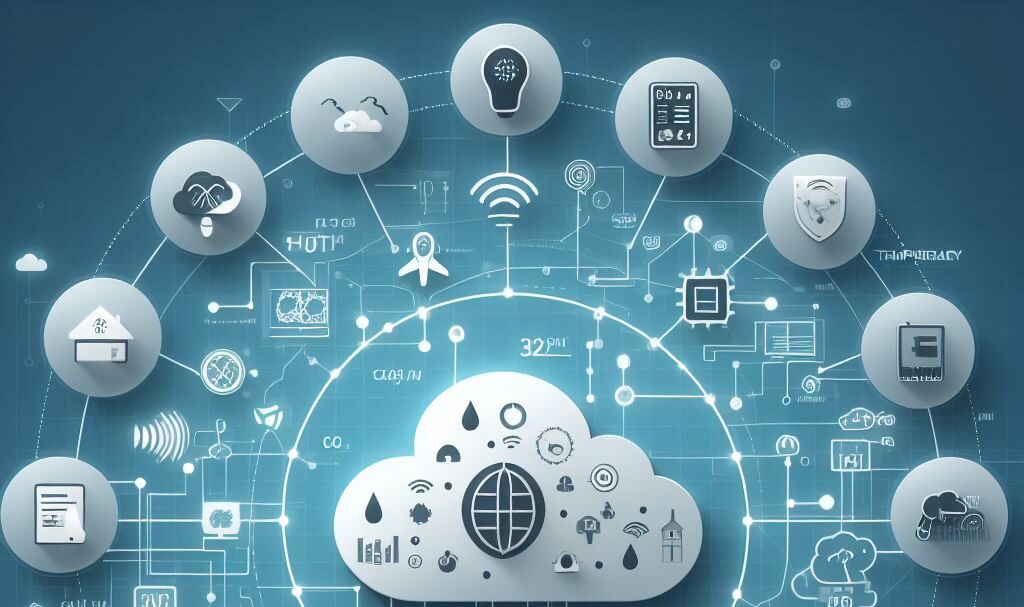
The necessity for precise and instantaneous ecological information has never been more critical, as climate change and environmental degradation pose increasing threats to earth’s equilibrium. With the advent of Machine-to-Machine (M2M) technologies—systems where machines communicate and work together with minimal or no human intervention—we stand on the cusp of revolutionizing the way we monitor and respond to environmental changes.
M2M Applications
Machine-to-Machine (M2M) technology has been instrumental in revolutionizing environmental monitoring. This digital cooperation involves direct communication between devices using any form of wired or wireless network. By leveraging M2M, we’re now able to collect, analyze, and act upon environmental data in unprecedented ways.
M2M systems grant the ability to automate processes and reduce human errors significantly. They are rapidly becoming a staple in environmental strategies across the globe. Comprehensive monitoring systems powered by M2M applications provide real-time data that is critical in preserving natural ecosystems and curbing environmental impacts.
Air Quality Sensors: Breathing New Life into Atmospheric Monitoring
Air quality sensors stand as vigilant guardians of our atmosphere. These compact yet powerful devices analyze a myriad of pollutants, such as carbon monoxide, nitrogen dioxide, particulate matter, and sulfur dioxide. Embedded within broader M2M frameworks, these sensors serve as a nexus for environmental data collection.
With constant real-time feedback, policymakers, researchers, and the public are better equipped to understand pollution patterns. These insights lead to informed decisions that aim to mitigate air pollution and adapt urban planning strategies. The adaptive capabilities of M2M-driven air quality sensors enable swift responses to any detected anomalies, ensuring actions are taken promptly to protect public health and the environment.
Water Management Systems
Water management systems embody the seamless integration of M2M technologies in the conservation of aquatic resources. These smart systems encompass a network of sensors and automated controls that work together to monitor factors such as water levels, quality, temperature, and flow rate, ensuring sustainable management of this precious resource.
Through real-time data acquisition and analysis, M2M-equipped water management systems can predict and prevent events like floods and droughts, optimize water distribution in agriculture, and maintain balance in natural ecosystems. They also play a critical role in detecting contaminants to prevent ecological catastrophes. The automation facilitated by these systems can lead to effective water preservation and allocation that align with sustainable practices and conservation goals.
Wildlife Tracking
Wildlife tracking has been transformed by the advent of M2M applications. By integrating sensors, GPS, and remote data collection methods, ecologists and conservationists can study animal behavior, migration patterns, and species populations with refined accuracy. M2M technologies have unlocked a new dimension in wildlife research, enabling interventions that are proactive, targeted, and informed by solid data.
This evolution of tracking methods has significant implications for preserving biodiversity. With ongoing habitat destruction and climate change, the ability to monitor wildlife movements and health helps inform protection policies and create effective conservation areas. M2M-powered wildlife tracking fits into a larger environmental stewardship narrative, where technology assists in maintaining the delicate balance of natural habitats.
Climate Change Analysis
The analysis of climate change is perhaps one of the most significant areas where M2M applications make an impact. An array of sensors and devices deployed across various environmental fronts gather high-volume data pertinent to climate phenomena. From ocean buoys that monitor sea temperature to glacial sensors tracking ice melt rates, M2M systems provide valuable insights into the state of the planet.
Strategic deployment of M2M-enabled devices allows for the continuous monitoring of greenhouse gas emissions and their sources. Such comprehensive datasets are vital for climate modeling and forecasting, which in turn support policy development and initiatives aimed at mitigating the effects of climate change. By integrating M2M technology into environmental research, we can approach climate-related challenges with a data-driven and results-oriented perspective.
Tapping Environmental Potential with IoT and M2M Synergy
The intersection of Internet of Things (IoT) devices and M2M applications represents a powerful synergy in environmental monitoring. IoT expands the reach and capability of M2M by incorporating everyday objects into a connected ecosystem. This is particularly important in creating a granular network that captures environmental data from multiple sources.
In combining IoT with M2M, these networks establish a comprehensive view of environmental conditions, bolstering decision-making processes in a multitude of sectors such as agriculture, urban development, and disaster management. The continuous exchange of data between devices and central systems fosters an environment where crucial decisions are backed by robust, actionable intelligence.
Addressing Challenges and Nurture Growth in M2M Deployment
While the potential of M2M applications in environmental monitoring is vast, challenges such as scalability, interoperability, and cyber security remain. Overcoming these hurdles is essential to fully realize the benefits of M2M technologies. As such, consistent advancements in device connectivity, data processing, and network security are integral for M2M frameworks to scale and adapt to diverse environmental requirements.
To sustain growth in M2M deployment, ongoing investment in research and development is critical, as is collaboration between technology providers, governments, and environmental organizations. A unified approach ensures that M2M systems are aligned with the global sustainability ethos.
The Role of M2M Applications in Shaping Tomorrow’s Environment
M2M applications offer a canvas on which a sustainable future can be painted. They are instrumental in providing the means to effectively monitor and respond to environmental changes. By incorporating these technologies into environmental monitoring strategies, we equip our society to better comprehend the complexities of ecosystems, respond to the challenges posed by climate change, and maintain the health of our planet.
The integration of air quality sensors, water management systems, wildlife tracking, and climate change analysis within the M2M framework reveals a swath of opportunities. These opportunities lie not only in safeguarding the environment but also in the education and empowerment of individuals and authorities to make data-driven decisions toward ecological stewardship.
Through dedicated efforts and technological innovation, M2M applications are setting a course for a more resilient, aware, and sustainable world.
